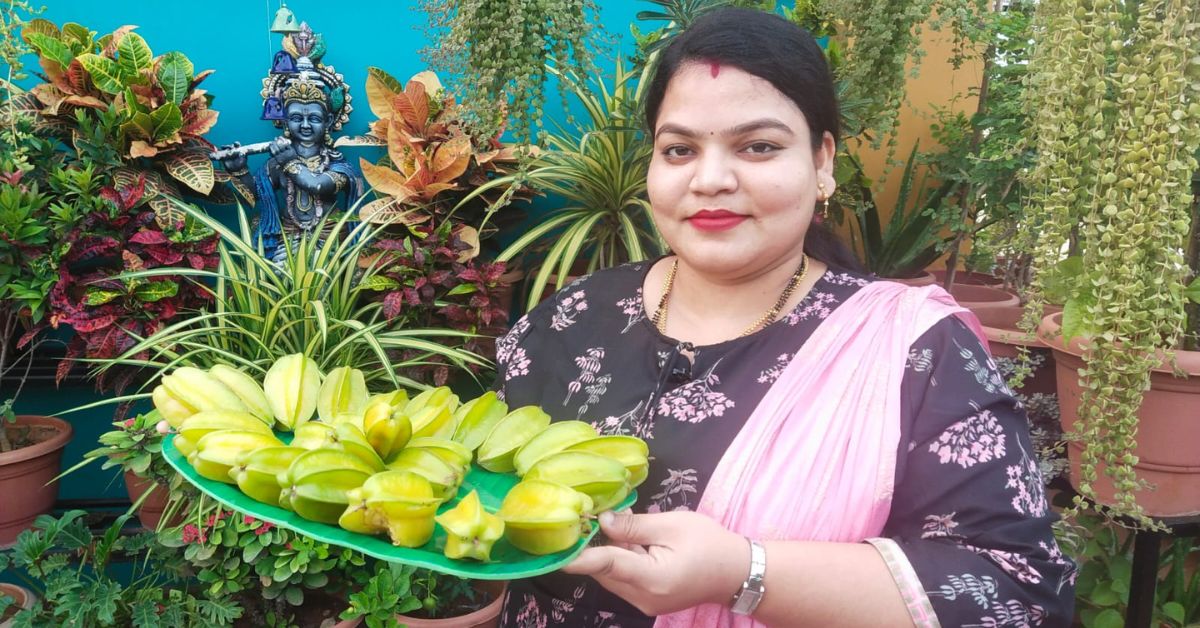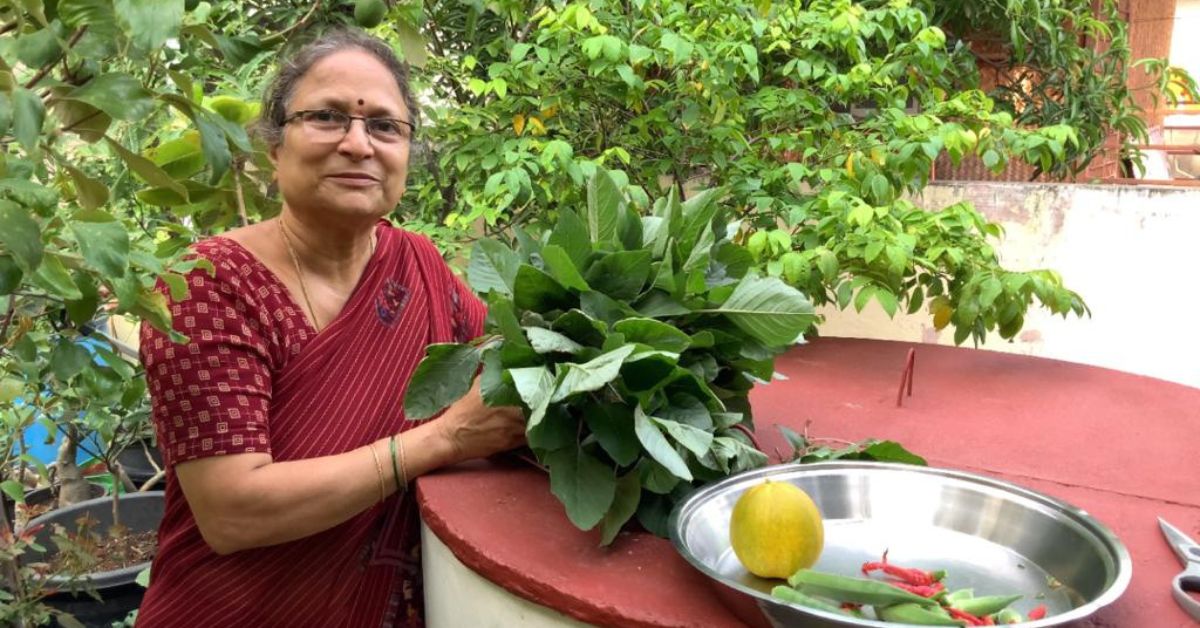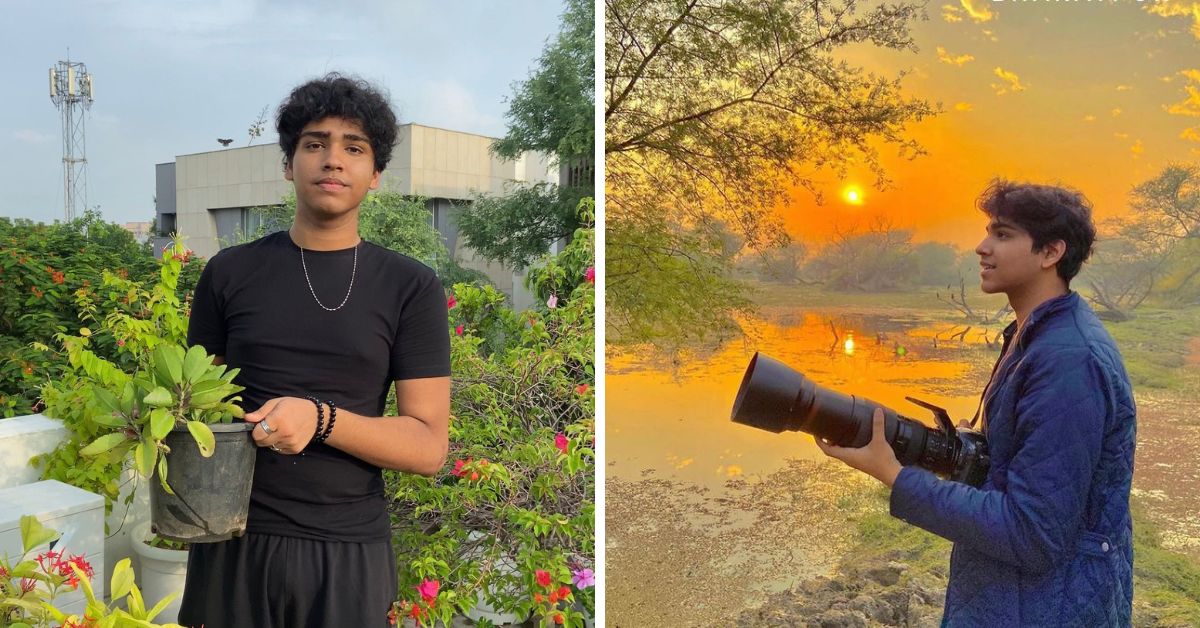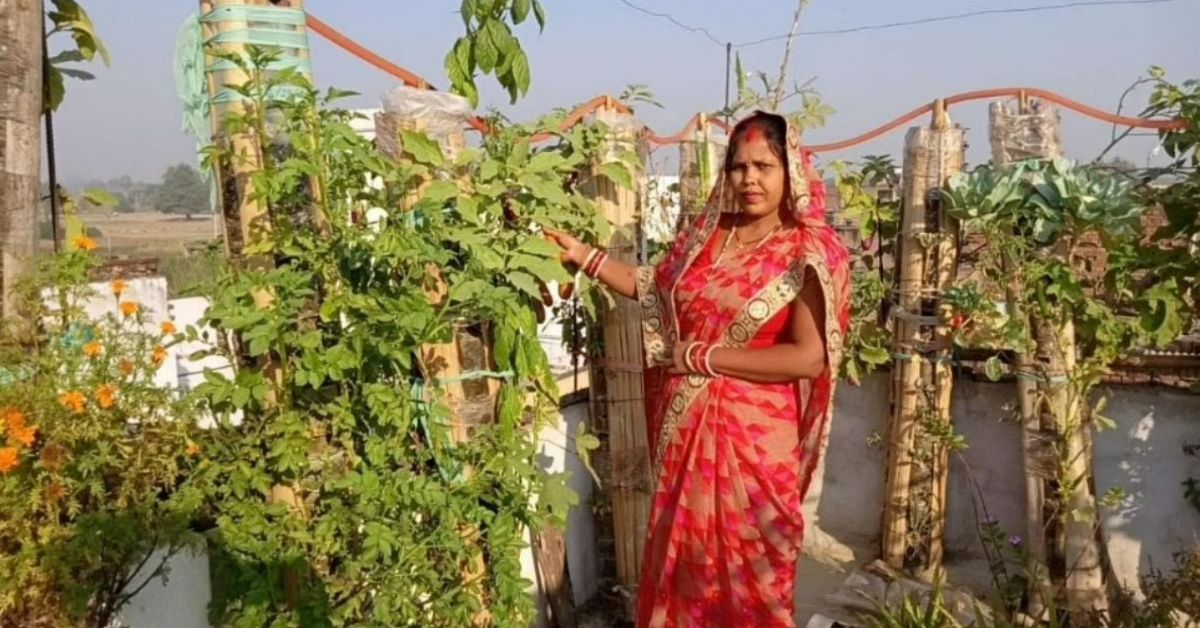Growing up, the aroma of freshly made jalebis and kachoris would gently drift into my nostrils, accompanied by the faint strains of Jagjit Singh’s ghazals, signalling the start of my Sundays!
Enveloped in the calming melodies of these songs, my father would care for his little green paradise on the terrace. He would call this the “best use of a terrace” and tending to his garden “a Sunday well-spent”.
Here’s a compilation of five such passionate homemakers and gardeners who have made the most of their balconies and terraces. They have cultivated a diverse array of produce — ranging from mangoes to strawberries, and from broccoli to turmeric.
1. Bangaru Jhansi, Visakhapatnam
Bangaru Jhansi (28) has transformed her terrace into a verdant jungle spanning 800 square feet. Bursting with a diverse array of ornamental and medicinal plants, verdant leafy vegetables, blooming flowers, and towering fruit trees, her terrace garden has emerged as a hub for sustainable farming.
The green oasis boasts over 600 plants — including watermelon, drumsticks, spring onions, star-fruits, three kinds of mangoes, yellow and red-coloured jackfruits, sweet lime, two kinds of oranges, Barbados cherries, strawberries, blueberries, dragon fruit, etc.

Last year, she was honoured with the prestigious Dr IV Subba Rao Rythu Nestham award by the former vice president, M Venkaiah Naidu, for her remarkable terrace garden.
Expert tip: Sharing the perfect potting mix to grow organic veggies at home, Bangaru shares that the perfect potting composition comprises 30 percent vermicompost/kitchen waste compost/cow dung, 30 percent soil, 30 percent cocopeat, and 10 percent neem cake.
2. Pinnaka Padma, Hyderabad
At 59 years old, Pinnaka Padma faced a predicament. With frequent relocations across different cities alongside her husband, she never had the opportunity to nurture a garden. Against all odds, she has transformed her residence in the heart of Hyderabad into a thriving mini-jungle, flourishing with over 1,000 plants, meticulously nurtured in 600 pots.
The diversity is astounding, encompassing vegetables, fruits, and flowers alike — including mangoes, Indian gooseberries, aloe vera, fenugreek, tomatoes, curry leaves, turmeric, cucumber, and broccoli.

The award-winning gardener also spends time recording videos for her YouTube channel ‘Patnam Lo Palleturu’, which boasts over four lakh followers.
Expert tip: Sharing one of her many concoctions to keep plants healthy, Pinnaka says, “Mix 150 ml of coconut oil with neem oil, cooking oil, mustard oil, and eggs. This mixture serves as an excellent liquid fertiliser that can be sprayed on the plants, providing essential proteins for their growth.”
3. Aman Sharma, Delhi
Aman was just a teenager when he embarked on transforming his 1,500 sqft terrace into an urban jungle in Delhi. Growing up with a deep passion for birdwatching and wildlife, he was driven to create a safe haven to attract birds and butterflies.
Now in his twenties, Aman shares, “Whenever I go out, I always keep an eye out for finding a cutting or sapling of a plant. Besides, I have travelled across Delhi, visiting forests to collect plant cuttings. Currently, I have more than 500 plants on my terrace which attract hundreds of birds and butterflies.”

Expert tip: Sharing tips on how to attract butterflies and birds to your urban jungle, Aman shares, “Plant the necessary host plants: powderpuff, milkweed, lemon tree and curry — plants where butterflies lay eggs that turn into caterpillars that eventually turn into butterflies.”
4. Sunita Prasad, Bihar
Vertical gardening is commonly perceived as an expensive farming method. However, Sunita Prasad (47), a homemaker from Bihar, is challenging this notion. She ingeniously utilised two five-foot PVC pipes and bamboo to cultivate vegetables and fruits — showcasing the affordability and efficiency of vertical gardening.
She was driven by the aim to provide her family with chemical-free produce. With a modest investment of Rs 1,000, this homemaker now reaps the rewards of up to 5 kg of organic vegetables and fruits weekly — including brinjal, okra, cabbage, and strawberries.

Expert tip: Bashing all the claims about vertical farming being an expensive affair, Sunita Prasad shares a fool-proof and cheap way of setting up your own, “Take a five-foot pipe, and cut as many parts according to the number of saplings/seeds you have. Fill ¾ th part of the pipe with soil and plant the seed/sapling. Add a mixture of vermicompost or any other organic fertiliser to the soil.”
5. Ravneet Kaur, Ludhiana
It all began when Ravneet Kaur embarked on growing wheatgrass to aid her ailing father. Subsequently, she delved into experimenting with cultivating various vegetables and fruits, aiming to provide her family with a chemical-free diet. As her family rallied to support her efforts, her terrace blossomed with 200 plants across its 2,000 sq ft expanse.
Ravneet meticulously adjusts her crops according to the weather, nurturing cauliflower, broccoli, cabbage, radish, and carrots in winter, and transitioning to cucumber, bitter gourd, lady’s finger, pumpkin, squash, tomatoes, and melons in summer.
Ravneet also transformed into an Instagram influencer by sharing her expertise, inspiring over 1.8 lakh followers to delve into gardening.
Expert tip: “As much as possible, plant things that are indigenous to the place you live in,” says Ravneet. Look for desi seeds from your local nurseries and communities. You will find these plants growing better, she shares.
(Edited by Pranita Bhat)
No comments:
Post a Comment